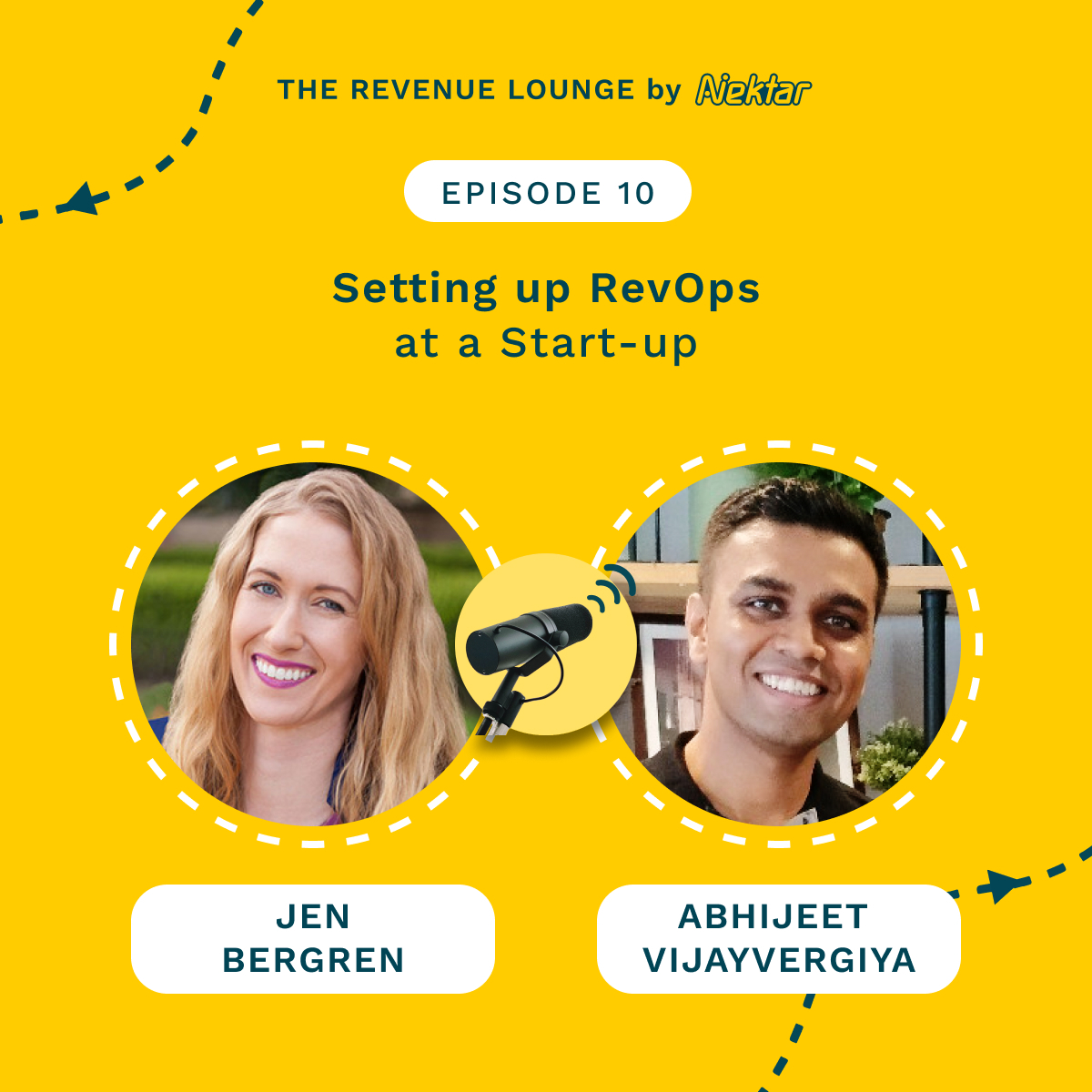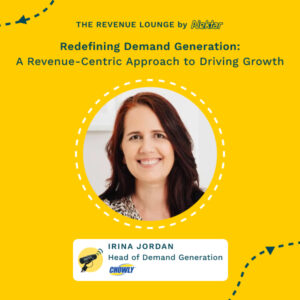Essential Strategies for Mastering RevOps ft. Colin Gerber
February 21, 2024
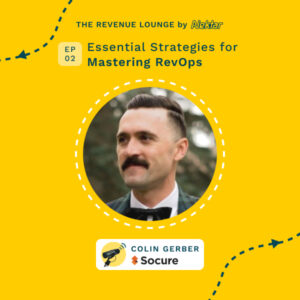
About
The Revenue Lounge
The podcast covers stories from leaders across RevOps, Sales, Customer Success, GTM, Data and Marketing about what drives these functions and what advice they would share with our listeners. With 3 seasons recorded, the podcast currently features 50+ enterprise leaders in the B2B SaaS domain. Tune in to hear from the best in the business
In this episode of the Revenue Lounge Podcast, host Randy Likas interviews Colin Gerber, the VP of Revenue Operations and Strategy at Socure. They dive into a range of topics related to navigating the complex landscape of revenue operations.
Key topics discussed include:
– The evolution of sales operations into the broader revenue operations function
– Best practices for aligning revenue operations across stakeholders and strategic priorities
– Maintaining high-quality customer data and using it to understand buying behavior
– Emerging trends like AI and revenue intelligence platforms
Guest Bio:
Colin Gerber has over 12 years of experience in revenue operations, sales operations, and business operations roles. He is currently the VP of Revenue Operations and Strategy at Socure, where he oversees strategy, systems, and performance related to all revenue-driving functions.
Key Quotes:
“Revenue operations, or rev ops, is the engine that drives revenue growth by aligning all revenue facing departments and ensuring they work together seamlessly.” (00:00:05)
“It really does come down to working on actually setting the correct segmentation and coverage model for types of customers.” (00:22:02) on helping identify churn
“Make sure you try out a few different companies, a few different segments, a few different models.” (00:30:47) Colin’s advice for aspiring revenue ops leaders

[00:00:05] Randy Likas: Revenue operations, or revops, is the engine that drives revenue growth by aligning all revenue facing departments and ensuring they work together seamlessly. Our guest today has navigated this complex landscape of revenue operations, and and we’ll be diving into a range of topics that open up the core challenges and strategies that keep them at the forefront of their industry. Hello, everyone. Welcome to the Revenue Lounge Podcast. I am your host, Randy Likas.
[00:00:28] Randy Likas: And joining me today is Colin Gerber. Colin is the vice president of revenue operations and strategy at Secure. He has over 12 years of experience in revenue operations, sales operations, and business operations. He’s passionate about building and scaling operations and strategy functions that deliver value and impact to the business and the customers. Hey, Colin.
[00:00:47] Randy Likas: Thanks for so much for joining us today.
[00:00:49] Colin Gerber: Hey. Thank you, Randy, for having me.
[00:00:51] Randy Likas: So looking forward to the discussion, Colin. I’ve I’ve been been studying your low LinkedIn profile and what you’ve been up to the past 12 years, but I’d love to just kick the conversation off and and maybe you can tell us a little bit about your current role at Socure.
[00:01:03] Colin Gerber: Oh, yeah. Definitely. Yeah. I’ve been at Socure for a little over a year and a half now. As you mentioned, leading revenue operations and strategy.
[00:01:09] Colin Gerber: Really how we define that there are here is basically any kind of revenue driving function. This is like the operational component, which supports and guides it. Right now, how I have the team divided up, it’s really into, 3 pillars. The first pillar being to go to market strategy and operations. So your kind of core sales operations, CX operations, as well as team supporting marketing, and then all of our post sales top of funnel stuff.
[00:01:34] Colin Gerber: So that’s really the core, like, forecasting, pipeline lead
management process, things around CPQ CLM, deal desk that kinda all sits in that group. 2nd group really being our commercial systems team. So that’s really Salesforce, our productivity stack, everything connected into it. Working really closely with the likes of our, business intelligence team, IT, kinda you name it. That team runs in out of a agile sprint, very similar to a product or engineering team, and they are really the product owners of our internal go to market systems.
[00:02:09] Colin Gerber: And then the 3rd pillar being what I call performance and pay. So it’s really, quota compensation, planning, as well as things around forecasting and working really closely with the life of accounting, finance, FP and a, and then our commercial leadership around quota comp quota and compensation design and operationalization and management.
[00:02:29] Randy Likas: Wow. So it sounds like you guys have really taken a very holistic look at all revenue impacting functions and incorporated that under the the revenue operations, you know, function in in, overall. I’m I’m sure it wasn’t like that when you first got into revenue operations. Right? It’s probably been do you work for small companies?
[00:02:44] Randy Likas: You work for big companies? We’d love to just hear a little bit more about your story. Like, how’d you get into rev app operations, and how has your role evolved over the years?
[00:02:52] Colin Gerber: Yeah. Definitely. Yeah. You’re spot on. Revenue operations as it sits today didn’t really exist 5 or 6 years ago.
00:02:58 Evolution of Revenue Operations
[00:02:58] Colin Gerber: Really, when I started off, it was sales operations, and that was really the 2nd iteration of sales operations because prior to, I would guess, like, 2,009, 2,010, Really, the function of sales operations sat in a bunch of different groups. Marketing was doing a little bit of it. There were sales admins who were doing a little bit of it, and then other pieces sat with, like, IT. When I came into the workforce and started out as more of a generalist and I would say more of a sales support role, The company I was at the time, which is is called AlienVault. It’s now AT and T Cybersecurity.
[00:03:30] Colin Gerber: As they grew, the need came to really consolidate the functions altogether into or not functions, but pieces of the function altogether into a singular function that really owned everything from top of funnel lead management, Salesforce, improvement management iteration, forecasting, pipeline management, quota compensation, reporting analytics. So those are, like, initial pieces that were, like, sales operations, but it really was sales presales specific. There really wasn’t even the thought for a post sales org and really supporting it in the same way. So I’d say, like, in the SaaS world or the technology space, as companies got a little more sophisticated, a little more data driven, It started out that all these other functions would start getting their own operational kind of part or piece within it. So then you have these large companies with a bunch of siloed operational functions everywhere.
[00:04:20] Colin Gerber: Marketing had their own. CS had their own. Even presales solution consulting, they might have had their own. Of course, sales had their own. And even within different segments of sales, they have their own.
[00:04:30] Colin Gerber: So it’s really a lot of groups doing very similar things, but it ended up being siloed. And there was a lot of duplication of efforts, miscommunications. Basically, the customer life cycle, customer journey was very disjointed because you would have one group, maybe they had the operational function a year before the other one. That group got super sophisticated. The other group was a little archaic, a little nascent.
[00:04:52] Colin Gerber: So if you have one piece, the customer journey that is super sophisticated, super automated, but the other pieces are not, it doesn’t really do much good and something’s gonna break. So really fast forward to, I guess, 2017 or 2016 to 2017. That’s really where companies, oh, we need to put all these groups together. Number 1, we probably have a bunch of headcount that is not being fully utilized. Number 2, they’re probably all doing kind of the same thing.
[00:05:18] Colin Gerber: Number 3, the company and the customer life cycle is just completely disjointed and not really doing not really progressing the business because we do like I said, we have these sophisticated functions in one area, but other area, it’s not. So that’s where revenue operations came in, and it’s defined different from company to company. But at the end of the day, it’s all these core operational functions under one umbrella touching all the different parts of the customer life cycle and all the revenue generating teams.
[00:05:45] Randy Likas: Yep. I think when you talk a little bit about, like, these comp compartmentalized groups that are sort of doing their own thing, and I think the need for it to evolve really comes from aligning people around a common, objective. Right? And that common objective has to have a defined strategy and and planning excellence really to execute it well. Can you talk a little bit about that in in terms of the context of revenue operations?
[00:06:08] Randy Likas: How how do you drive that strategy and that planning excellence?
[00:06:12] Colin Gerber: Yeah. That really starts with the greater kinda, like, company planning process and what are the targets, what are the agreed upon KPIs, how do we track these, how do we talk about these, who’s involved, then really setting a solid plan and revenue operations is an integral part of that planning process. Really, we are the connective tissue between the go to market functions, marketing, product, like, you name it, and really tying that in with the kind of information context analytics needed for the finance team to actually put the plan together. Then from there, you have your your goals and targets for the year. So it’s like, where are our gaps right now?
[00:06:46] Colin Gerber: Is it resourcing? Is it tooling? Is it process? Is it some sort of enablement? That’s really how you do your joint road map planning, and you tie those initiatives or I would say, you know, how we think, like, a mid or long term project or quick easy wins.
00:07:02 Interview with Colin Gerber on Revenue Operations
[00:06:46] Colin Gerber: Is it resourcing? Is it tooling? Is it process? Is it some sort of enablement? That’s really how you do your joint road map planning, and you tie those initiatives or I would say, you know, how we think, like, a mid or long term project or quick easy wins.
[00:07:04] Colin Gerber: How do we tie these in with getting to the goal and meeting the needs and the gaps in the org? That’s really what having the revenue operations team partner with all these different leaders across the organization really string it together because we do touch all these different pieces of the company, and we also own their systems, tools, and processes as well as their analytics. So ensuring that you are doing joint roadmap planning and identifying gaps that will help us enable reach goal once we plug them.
[00:07:30] Randy Likas: Yeah. We talked to, you know, several leaders like yourself who they all come from different places. So sometimes revenue operations reports up through the finance organization. Sometimes it’s through the sales organization. If you truly have a CRO, it’s to that CRO.
[00:07:43] Randy Likas: Where have you found the most success as far as having revenue operations sit in that org structure?
[00:07:49] Colin Gerber: Yeah. Throughout my career, different companies, I’ve reported depending on size of the company and the level of leadership or type of leadership they had early stage are typically reporting into a COO. Or if you have a really good VP or SVP of sales, holistically gets it owning all of revenue. And like you said, in a more mature late stage venture or a publicly traded company, it’s typically a CRO or a CFO. Most recently, here at so Kieran and my previous role at BGS, I’ve rolled up into finance under a CFO, which based on our peer or, like, sister teams being really close with accounting, finance, FP and A, legal, our p and e, or, like, people HR teams.
[00:08:27] Colin Gerber: Like, that just it’s been really, I think, a great kind of orientation of the team and has really led to tighter collaboration on a lot of the g and a back office stuff. Having a little separation from the GTM teams, even though you’re tightly aligned to them, you are governing things like compensation, forecasting, analytics. You wanna be objective, like, fit the state kind of thing where you are close, but not too close, able to look inward and have a little more objective opinion or, of take on things and be able to spot stuff as a little more of outside supporting function rather than completely embedded.
[00:09:02] Randy Likas: Yeah. Yeah. Agreed. So one of the things I think Revit operations leaders struggle with sometimes is be they have so many stakeholders that they’re dealing with, and and they get asked to do a lot of things. Right?
00:09:07 Balancing Stakeholder Relations in RevOps
[00:09:02] Randy Likas: Yeah. Yeah. Agreed. So one of the things I think Revit operations leaders struggle with sometimes is be they have so many stakeholders that they’re dealing with, and and they get asked to do a lot of things. Right?
[00:09:13] Randy Likas: You get sucked into the delivery of the business. So how does a a rev ops leader stay aligned with their key stakeholders and and really stay at the the strategy level as opposed to getting sucked into the day to day?
[00:09:24] Colin Gerber: Yeah. I think that comes down to team organization, how you’re aligning resources. Right now, I really have the team aligned to specific groups of stakeholders as more business partners, like, similar you what what you’d see in a p and e function or a product marketing function. We have very specific people on a team working with very specific stakeholders, so we don’t have duplication of efforts, within our team. Or if someone from those groups needs something or they want something on the road map, they know specifically who to go to.
[00:09:53] Colin Gerber: We were working pretty heavily out of, Jira ticketing sit system, where we do all of our project management. We do require business requirements for things. So if someone’s trying to solve for something, we don’t want them to solution it. That’s our job. We want them to come with us and what they’re trying to solve for or what they’re trying to accomplish.
[00:10:11] Colin Gerber: And And then we figure out how to get from point a to point b and try to work asynchronously there to force and multiply our time and resources. So it’s really that single threaded ownership within the revenue ops or to those greater groups or the kind of adjacent groups, and then ensuring that there’s proper expectations set on things as far as timelines for when things need to get done. More so the what needs to be done rather than how is our job freeing up from there and not going iterating on solutioning with these teams when they should be working with prospects or customers.
[00:10:42] Randy Likas: Yeah. So I’m sure you probably get inundated with asks. Right? Whether it’s a marketer or or a sales what are some of the best practices in terms of servicing those internal customers? Right?
[00:10:53] Randy Likas: And you you probably have to say no to a lot of things. How do you do that in an effective way that where people don’t get upset because they’re like, my priority should be your priority. You’re like, well, actually, I serve a larger group than just yourself. So any ideas in terms of how you service those internal customers?
[00:11:07] Colin Gerber: Yeah. Well, it certainly is not first in, first out. That’s a mistake I’m sure I made early in my career, and I’m sure a lot of people have made. It really does come down to understanding effort versus impact and vice versa. As well as, once again, understanding what are the ultimate goals that this is this a point solution, or is this threaded into a larger process or piece of the model?
[00:11:28] Colin Gerber: And is this gonna be impactful of business right now? You don’t say no to stuff. You say we can prioritize this, but then we have to deprioritize that. And there’s always the backlog. So, say, we do have some time and some cycles or capacity.
00:11:41 The Role of Revenue Operations in Stakeholder Alignment and Customer Feedback
[00:11:41] Colin Gerber: We can go in the backlog and kinda pick and choose stuff out of there that would make sense at that time. And once again, stakeholder alignment’s all about setting the correct expectations on just timing and the capacity of the team.
[00:11:53] Randy Likas: Yeah. Effort versus impact. I like that. And also, it sort of goes back to, I think, a previous question that we talked about, which is staying connected to the overall strategy. Like, how is this ask impacting the business initiatives that we’re trying to drive right now?
[00:12:07] Randy Likas: What about voice of the customer? So you rev ops sits in a really interesting position in terms of you’re working with so many different stakeholders. You’re able to hear the voice of the customer from different pockets. What role does rev ops play in bringing the voice of the customer to your internal stakeholders?
[00:12:22] Colin Gerber: Yeah. Really, I think it’s not only I’d say the managers are managers of the managers, but it’s really getting down to the field, conducting what I’ve called end user interviews because there are the sales folks or even anyone on the front line, those are really our end users. So conducting regular interviews, intaking their kind of feedback, good or bad, in a organized manner, Spending that up into an output of either roadmap or, oh, we actually already have this day and maybe we need to plan some reeducation or enablement on a specific topic and really bucketing it as this is a potential gap in improvement. This is more of an enablement, like, issue, or this is something we need to work on with another group. It may have come up to us, but it might be legal or marketing that we need to flag this to and work with them on.
[00:13:10] Colin Gerber: And then outside of that, it’s really having a regular kind of cadence for an advisory board or what we call internal advisory board where, folks from different groups come and sit in and just give regular feedback, and we take that and put it in road map and identify, like, the gaps. This is something we are actually just spinning up here just because we’ve been iterating and moving through things really quick, and it’s been difficult to, like, best settle. But now we’re the place where we do need to take a step back and make sure that we aren’t just creating a monstrosity in our systems. Like, there’s overly burdensome processes. We, like, need to circle back on enablement for a few critical processes right now.
[00:13:49] Colin Gerber: So it’s something we are just spinning up right now, and that’s how I look at it is all the teams we support, those are our customers, just a prospect or a customer to the actual customer facing folks.
[00:13:59] Randy Likas: Yep. Let let’s change gears a little bit. Let’s talk about, data. Because whenever your organization that that I’ve worked with, we’ve always struggled with maintaining high quality data for our go to market teams. And as I talk across our customer base, it seems like maintaining quality data is always a challenge.
00:14:16 Challenges in Capturing Buyer Committee Behavior in Deals
[00:14:16] Randy Likas: Why do you think that is for most organizations?
[00:14:19] Colin Gerber: I really think that tends to go with the pace of the business. If we’re changing strategy on a dime, maybe we’re looking at customers in a different way. We are rolling out a bunch of new processes, ripping and replacing stuff. I think a lot of change and organizational thrash causes that. Also, say you didn’t say you realize you need this data point or this piece of data from a process and you this is totally new.
[00:14:42] Colin Gerber: It’s sometimes adoption or making it in a way where it’s not causing additional friction in the sales cycle. So it’s a very fine line. So I find a lot of that’s either, the controls are too tight in the system to actually get the data you need for the analytics or it’s too loose. It’s just really finding that sweet spot.
[00:15:00] Colin Gerber: And if the business is iterating, transforming fairly regularly, it’s hard to get to a solid state to actually be like, okay. These are our metrics. Now we have it trending. We’ve been doing the same thing for a while. So that’s generally what I’ve seen as businesses that are growing or shifting or changing leadership.
[00:15:15] Colin Gerber: They wanna look at things a different way. It’s really coming down to consistency and finding that sweet spot into something that’s not too draconian or too tight on the sales team or the go to market teams and or something that’s not too loose where you’re just not gonna get adoption and or just get data that’s not very useful.
[00:15:30] Randy Likas: I love the analogy there. It’s either tight or too loose. Is it a little bit of a given play, meaning let’s start with these processes. Let’s see how they’re for the we’re getting the data that we need. And if we’re not, we need to turn those knobs a little bit to to to make them tighter or looser.
[00:15:43] Randy Likas: Would you is that kind of the the advice you might give to iterate off of that?
[00:15:47] Colin Gerber: Yeah. And I think the customer life cycle or the customer journey, it’s basically an unfinished product at all times, so you’re constantly iterating through it. You gotta roll stuff out, and then it’s not gonna be a 100% correct. So you gotta be able to go back and have something that’s flexible enough where you can iterate and dial it forwards or backwards depending on what is needed and what you’re seeing. And like I said, though, the only issue is that does take time, and the business may need this stuff right now or very in the near future.
[00:16:13] Colin Gerber: So you’re operating off of assumptions and, incomplete data or things fueling your analytics until you actually get a trend or you get into a more of a solid state. But it’s definitely the imperfect unfinished product that you’re constantly developing. You’re never gonna be like, we are a 100% done with our customer journey or Salesforce is a 100% perfect, and all our tools work great. You’re constantly working on everything and transforming your process or tooling with the business.
[00:16:38] Randy Likas: Yeah. Absolutely. Okay. So let’s talk a little bit about deals. Right?
[00:16:42] Randy Likas: We’ve seen many purchasing decisions It probably started be just before the pandemic, but even mud more scrutiny now where even in down segments where it used to be maybe just be an enterprise, more participation from other stakeholders are needed as part of the buying committee. They’re getting much larger. Right? I think it’s, like, 8 to 12 people are are involved in these deals now. Yet most organizations right now don’t do a really good job of capturing that buyer committee behavior.
00:17:06 Discussion on Capturing Buyer Committee Behavior and Stakeholder Management in Sales Process
[00:17:06] Randy Likas: They might set a validation rule at the beginning where a rep has to put one owner on on the opportunity. And then as the deal unfolds, like, they never go back and update that. Right? Why do you think that’s a problem? Like, the capturing that sort of buyer committee behavior or being able to to act off of that.
[00:17:22] Colin Gerber: Yeah. I mean, unless you have a really tight QA from, I’d say, like, the frontline management, it’s really difficult to say, oh, you need to have, like, x amount of people, like, attached to this opportunity because it does vary and it’s very subjective. It’s pretty easy now to add people to an op and ingest new contacts or even map out spheres of influence within tooling and Salesforce, something like we are working on doing right now with some enhancements we’ve been doing to LinkedIn and Sales Navigator and some things there, which are pretty cool. But, usually, you do an account plan or, like, a QBR, and it’s just like an org chart on a slide. And then the next question is, are are all these people actually marked on the opportunity for their, like, role?
[00:18:02] Colin Gerber: And, usually, the answer is no. It’s a very hard thing to regulate, but something that, is beneficial to the entire company. Company. Everything from your marketing ABM programs, sales leadership, or our c levels knowing who they need to be, like, interfacing with in the post sales understanding whose responsibility is to, you know, the AM, who are they covering, who is our CSM covering, who a TAM cover. It’s beneficial to the entire organization, but it’s definitely something that takes a lot of rigor and a tight process around and very clear expectations.
[00:18:32] Colin Gerber: But once again, it is still very subjective. You could have a $1,000,000 deal with 2 people at stakeholders. You could have a $50,000 deal with 20 stakeholders. It just really depends on deal to deals. It’s a very hard thing to eyeball at this point.
[00:18:47] Randy Likas: And I think that some of that can be automated in the sense of picking up who’s been invited on the calendar and who’s participated and so on and so forth. But a part of that is also gonna be qualitative as well where the reps gotta go in and say, yeah. This person’s been involved in a lot of meetings, but they’re not a champion or coach. Right? And so there’s gonna be a little bit I see I think a balance between how much of that we can automate and how much of that we still have to ask the rep to go in and weigh in on.
[00:19:09] Colin Gerber: Yeah. There’s definitely a a large human factor here. And anything where there is a large human factor, that’s gonna be the more difficult kind of process or kind of insight to get because it it it is labor intensive, and it’s not something that’s gonna be static forever. So as a company changes, as people, like, cycle in and out of a company or say you move over into different groups or selling into different business lines of the company. Some of the stakeholders may be the same, but there may be totally new players on the board depending on who and what you’re selling to within even the same company.
[00:19:40] Randy Likas: I think that you’ll see that a lot post the deal gets signed. Now we’re gonna hand it over the success organization, and those players that were involved in the sales process are not the ones that we’re dealing with in the delivery. Right? And so it’s understanding who was involved, what the role was, and then the new people that are coming into that as well in the on the on the delivery.
00:19:58 Discussion on Enterprise Sales Trends in Procurement Processes
[00:19:58] Colin Gerber: Yeah. And also a great trend I’ve been seeing too, especially in a lot of the enterprise orgs is the buyers or the people in the valuation. None of them may even be the economic buyer. There’s probably someone like 2 or 3 levels up who end up being the one who have to sign the paper, or they don’t mention they have a rigorous procurement process and the procurement person isn’t even brought in till contracts ready to be signed. And then they come back with a bunch of other stipulations or asks and things that need to get figured out.
[00:20:22] Colin Gerber: It’s almost like you’re doing a second negotiation, and I’ve seen that prolonging a lot of enterprise buying cycles. There’s not a lot of, I’d say, like, signatory or buying authorization at many levels. It’s usually now up to a c level at a lot of companies that have to sign off on everything. So that’s what I’ve been seeing and that stuff that doesn’t give necessarily surface until the end of the process when you think you have this thing over the line.
[00:20:43] Randy Likas: Yeah. What what’s good now is because the the systems are getting better and we’re collecting more information, we can look at the deals post close of the past 100 deals that we’ve had in the enterprise segment and say, you know what? We’re seeing that this particular role needs to get involved in order for us to get this over the line. Let’s take a look at that, our current pipe, and look at the outliers in terms of when that role wasn’t involved. Like, we can start prompting our reps to try to ask questions to get those roles involved Yeah.
[00:21:09] Randy Likas: Through the process.
[00:21:11] Colin Gerber: Yeah. That’s spot on. That’s definitely solved with actually having a very firm, like, joint execution plan. Then these are the questions they need to ask. Okay.
[00:21:18] Colin Gerber: So how does this work? Do we need a PO? Does this go through procurement? Who will actually be signing this? When are we gonna be introduced to this person?
[00:21:27] Colin Gerber: Do you use internal or external legal counsel who’s gonna actually be reviewing the contract and understanding a lot of those things upfront and putting names to steps and actually understanding what dates you’re agreeing upon for the milestones.
[00:21:40] Randy Likas: Yeah. Implementation of Medpick and a mutual action plan are trends that we’re seeing across all of our clients. Yeah. For that exact reason. So let’s talk about GRR and NRR.
00:21:49 Discussion on the Role of Revenue Operations in Addressing Downsell and Churn, AI in Revenue Operations, and the Potential Implications of AI on Customer Data
[00:21:49] Randy Likas: Right? They seem to be the metrics right now that in the past 12, 8 months at, at least, everyone’s focused on. What role does rev ops have in helping identify spot and derisk some of that down sell and churn?
[00:22:02] Colin Gerber: Yeah. Yeah. I think that really does come down to working on actually setting the correct segmentation and coverage model for types of customers. But then also understanding within a segment, there’s a spectrum or range. There’s people who are really happy and that are large and that are low touch, and there’s people that are need white glove and are gonna be a very high touch in the same same segment.
[00:22:23] Colin Gerber: There’s gonna be customers that are deemed strategic that are, not of a high value to the company from an ARR perspective or a revenue perspective, but they’re gonna need inverse support for their size. So really segmenting them correctly, giving the field the correct analytics. We we’re consumption based, volume based business. Looking at week over week trends, understanding when you see dips and spikes in their usage, is it actually as a dip, is that actually them possibly being a churn risk, or is it they’re, like, a seasonal business? Like, for instance, we have a lot of online gaming.
[00:22:56] Colin Gerber: So during, like, football season, like sports betting, if their their usage spikes after it dips, until you get to, like, basketball playoffs or something. So, like, understanding if it’s, like, a seasonal business or if you see, like, a spike on something. It’s a customer. Oh, this is odd. They’re really small.
[00:23:12] Colin Gerber: Is there something wrong with their utilization? Are they properly implemented? Are they sending duplicative volume on the same call or customer coming through their our platform? So it’s really understanding and having a regular form where you look at dips and spikes, putting context around those, and giving the field the analytics to have that context and make those forms in those meetings. And then once again, it all goes back to as properly segmenting your customers and ensuring they have the proper coverage and support for however we internally deem them as far as level of strategically important or how important they are to our business from an overall revenue ARR perspective.
[00:23:46] Randy Likas: So I just came back from your neck of the woods. I was at Dreamforce last week. You couldn’t have a conversation without somebody talking about AI. Right? It’s just everywhere.
[00:23:55] Randy Likas: How much do you think of AI for rev ops is hype? What are the low hanging use cases that you see maybe AI solving for rev ops?
[00:24:03] Colin Gerber: Yeah. I think right now, it’s very new, and a a lot of these companies that are integrating it, they’re trying to be ahead of the curve, but it is a black box. As far as initial use cases and some of the first stuff that was coming out that has come out is really around call recordings, call sentiment, actually be able to parse out a conversation using just a transcript, give overall takeaways, and something for a leader to easily digest. I could go through 50 calls in a half hour by just reading, like, excerpts and getting overall sentiment scores. Also, AI, I think, like, right now, if you think about forecasting tools like Clari and stuff, it’s really a machine learning, a little more algorithmic.
[00:24:38] Colin Gerber: If you can integrate actual AI and something that can learn a bit quicker and then they’re not just based on a model, perhaps that would be a good use case where AI is forecasting. But right now, I think this is a hot new topic, and I I see a lot of it as a black box and still a little nascent. That’s why a lot of companies like Salesforce right now are giving away AI capabilities. They can’t fully productize it yet because they they don’t actually know how good it’s gonna be or if it’s gonna work or not.
[00:25:03] Randy Likas: Well and and and so much of it is precipitated on you have to have good data to have good, you know, output. And so a lot of these AI offerings are being built, and they’re hyping it. But if it’s not built on good data, like, what good is it gonna gonna do for you?
[00:25:18] Colin Gerber: Yeah. And you could stay out with a lot of tools out there, free AI. Like, it’s Yeah. Garbage in, garbage out. If you don’t have a solid processes and correct guardrails in place, whatever data is being collected across systems and being ingested into something, it’s not gonna be great or that could be said by any of our business intelligent tools.
[00:25:34] Colin Gerber: Sure. The chart and the visual looks great, but how’s the underlying data? Is this even right? That’s a very classic trap.
[00:25:42] Randy Likas: Yeah. 100%. Do you do you think that with a lot of these LLMs that a lot of these these are being built on, one of the big challenges right now is if you’re taking your customer data and you’re putting it in here, you’re gonna be worried about security, right, in terms of taking that customer date, putting in that. What do you think the the implications of that are gonna be on privatized information or customer information and how that’s gonna affect the application of the different AI actuals? Yeah.
[00:26:05] Colin Gerber: Heidi, I think it just all depends at the end of the day where this AI is actually hosted. Is it onshore, like AWS servers that are governed by all the same regulations that we already have our product on and all of our, like, PII on. I think it’s just gonna have to just follow, like, the same governance. And once again, I don’t know the implications of some of the stuff AI does. It’s, like, unpredictable.
[00:26:27] Colin Gerber: Oh, we built this AI, and now it’s, like, doing things that we didn’t think it knew how to do or what it’d be doing, like, a little bit of Skynet or something. So as long as they keep it posted onshore and it’s, like, following generally the same regulations as all the kind of cloud AWS stuff. It’s probably fine, but, also, I feel like with chat g t p GTP and all the other ones, it’s doing stuff that they didn’t know it could do. So that’s what’s a little possibly alarming. So I’d say I I’m a little skeptical still on the whole AI and especially when you’re dealing with, like, cuts sensitive customer data.
[00:27:00] Colin Gerber: But working at Uber still with the way that security GRC processes there, all that stuff would be making it through right now.
[00:27:06] Randy Likas: Yeah. Yeah. I think it has a lot of promise, but you gotta really focus in terms of the security piece of it. Okay. There’s been a lot of activity going on in, like, the revenue intelligence space.
[00:27:15] Randy Likas: Right? Clari came in buttgroove. Gong launched their sequencing product. ZoomInfo’s got a sequencing got product. Everybody’s trying to build the Uber platform, which is gonna be the one place where, you know, reps live.
[00:27:27] Randy Likas: What are your thoughts? Are you thinking that best of breed is still the right approach, or do you think the one consolidated application that might not have the best capabilities, but they’ve got good enough? What’s your position on that?
00:27:39 Conversation with Colin Gerber on the Challenges and Benefits of Rev Ops
[00:27:39] Colin Gerber: Yeah. So I’m definitely and I my head of commercial systems were definitely in the same mind that a consolidation of tools is a good thing. We spend more time as a team QA ing and diagnosing multiple integrations across systems, especially if one system ingest information and data from another, and then Salesforce is in the middle. We spend more time debugging QA in these things. There’s more systems go down and for us to have to figure out what actually caused it.
[00:28:03] Colin Gerber: So I think a consolidation of tools is great, but you really need to understand what you’re trying to solve for and what level of sophistication you need from each piece. Do you need something as powerful as an outreach for your sales team or does a more, like, simplistic functionality that’s so clean and works well with, like, a Groove? And then you end up getting Clari for forecasting. And then they have Clari, which they have the copilot now, which is basically would be a Gong replacement. That could be a really good angle.
[00:28:28] Colin Gerber: It just depends on what features and what level of sophistication you need in each piece. But I think something playing on a single platform that covers what you’ve had 5 different tools for before is a good thing. Yeah. One data model. Right?
[00:28:40] Colin Gerber: Yeah. For sure.
[00:28:41] Randy Likas: Alright. Let let’s change the questions up a little bit. Let’s make it a little bit more fun and interactive. Not so much about about shop, but we’d love to hear from you with more rapid fire type questions. What’s the one book that you’ve read recently that you’ve really loved?
[00:28:53] Colin Gerber: Yeah. I just finished up a autobiography on Bill Bowerman in the men of Oregon. I ran track in college, so I’ve always been a big track and field enthusiast. And Eugene, Oregon and University of Oregon is the mecco track. So it was a very interesting autobiography, and I learned a lot more about him than I didn’t know before.
[00:29:09] Randy Likas: Yeah. What was your event in college? I
[00:29:12] Colin Gerber: ran the 4 100 and the 200.
[00:29:14] Randy Likas: You’re fast.
[00:29:15] Colin Gerber: UCSB was a mid major conference, but I made it work for me.
[00:29:18] Randy Likas: Yep. What what’s your favorite part about working in rev ops?
[00:29:22] Colin Gerber: I think my favorite part is just really having a good macro view of a company and touching every group and having that context. I don’t know how I would just working in a another role where I wasn’t so broad and touching so many different things.
[00:29:35] Randy Likas: Yeah. What’s your least favorite part about rev ops? Or I guess it asked maybe a different way. What what’s really hard about your job?
[00:29:42] Colin Gerber: What’s really hard is something we touched on is all the competing priorities. So being broad is great, but then you are, exposed to a lot of different groups with a lot of different, competing priorities. And just like you said, it’s really figuring out how to prioritize and temper expectations and keep everyone rolling in the same direction. So it’s with being a connective tissue comes a a lot of, you know, pressure and, there’s gonna be a lot of cooks in the kitchen sometimes when you’re trying to get something done.
[00:30:07] Randy Likas: Yeah. What’s one piece of advice that you’ve received from someone that stayed with you that you maybe like to share with the audience?
[00:30:15] Colin Gerber: Yeah. Something early in my career is make sure you get everything in writing. Especially in this role, people forget what they say all the time or forget what they agree to. So make sure you get explicit sign off on everything in writing, especially if it’s touching bookings, revenue, compensation. And I have trouble keeping stuff straight sometimes myself.
[00:30:33] Colin Gerber: So unless it’s written down and I have it somewhere and I know where it is, you always gotta have receipts.
[00:30:38] Randy Likas: 100%. I’ve lived through that. Alright, Con. Last one for you. What’s the one piece of advice for people who would like to have your job someday?
00:30:47 Insights from Colin Gerber on Revenue Operations
[00:30:47] Colin Gerber: I would say make sure you try out a few different companies, a few different segments, a few different models. It’s gonna be important to understand everything from, you know, SaaS consumption, working at a series a company or individual contributor, going to a mid late stage venture, working at a public and traded company, understanding all the different stages of a company and how that progression works, as well as just exposing yourself to as many different types of product spaces as possible, be it 2 sided marketplace, just like regular staffs, fintech, security. Just get as much exposure as possible so you could be as well rounded as possible to set you up for success.
[00:31:26] Randy Likas: Are there any skill sets? Hey. You’re you’ve been in sales ops. You gotta go learn marketing apps. So you you’re a really good executor, but we need you to be more of a program manager.
[00:31:35] Randy Likas: Would would your advice also fall into try to get as much lateral understanding as well? This is an observation based on what you said, but what what were your thoughts there?
[00:31:43] Colin Gerber: Yeah. It’s definitely a diverse group of functions that roll under revenue operations org. So even if it’s not in a formal capacity, like, if you see a project or, like, an initiative that you wanna be exposed to or work on, ask to be involved. Ask your manager. Yeah.
[00:31:59] Colin Gerber: It’s not necessarily something you’ll be owning going forward or something you’ll be owning in the future, but understanding it and being a part of it is, like, gonna be super critical in your own, like, career development.
[00:32:11] Randy Likas: Yeah. Love that. Well, Colin, listen. I know we’re coming up on time. I just wanna say thank you very much.
[00:32:16] Randy Likas: I’ve had a really fun conversation with you, learned quite a bit. But that’s a wrap for this episode of the revenue lounge. I wanna just thank you again, and we’ll be in touch.
[00:32:24] Colin Gerber: Alright. Sounds good, Randy.
[00:32:25] Randy Likas: Alright. Take care.

Ep #1: Navigating the Downturn with a Hyperfocus on Productivity
Listen Now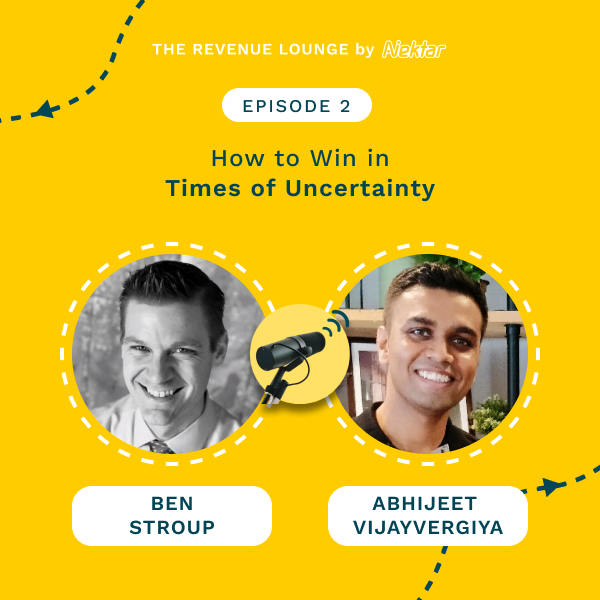
Ep #2: How to Win in Times of Uncertainty
Listen Now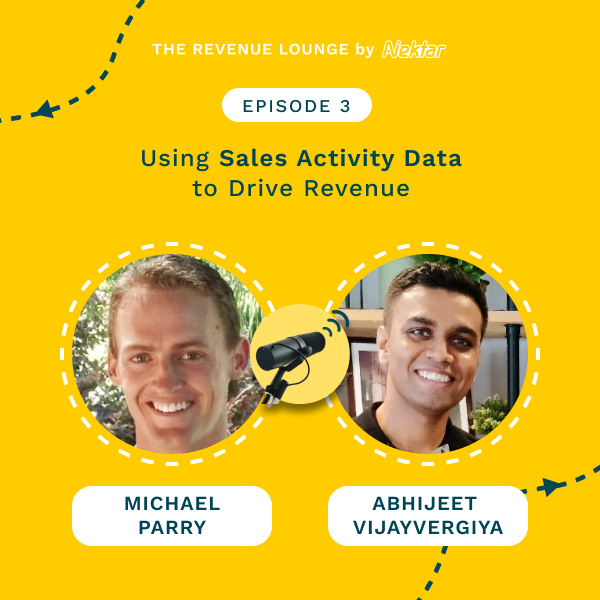
Ep #3: Using Activity Data to Drive Sales Productivity
Listen Now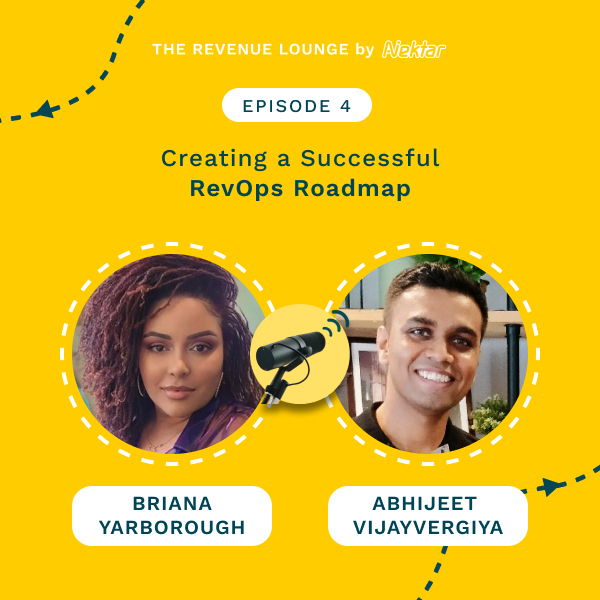
Ep #4: Creating a Successful RevOps Roadmap
Listen Now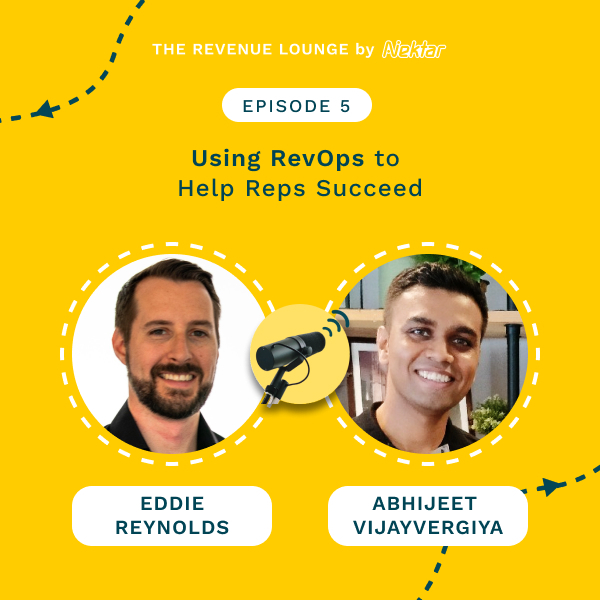
Ep #5: Using RevOps to Help Reps Succeed
Listen Now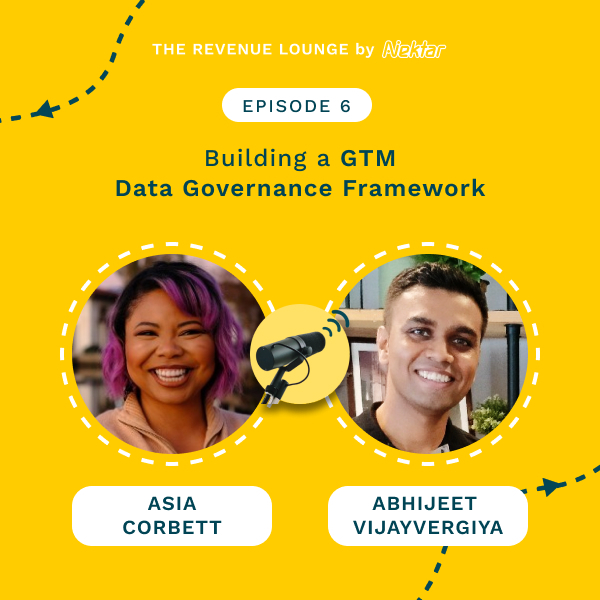
Ep #6: Building a GTM Data Governance Framework
Listen Now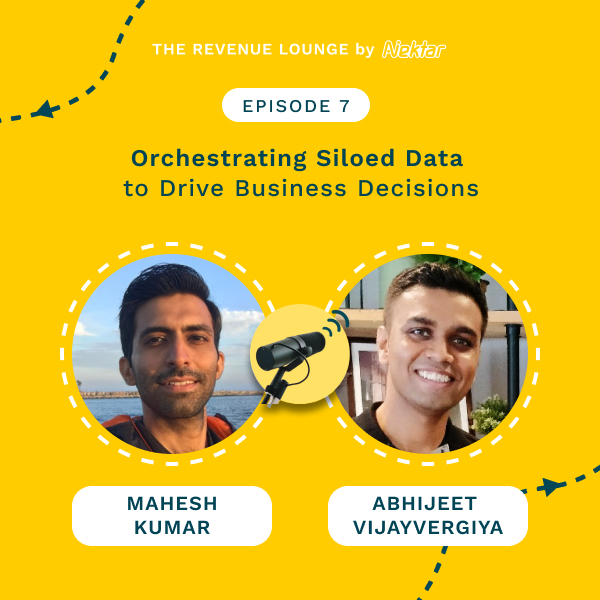
Ep #7: Orchestrating Siloed Data to Drive Business Decisions
Listen Now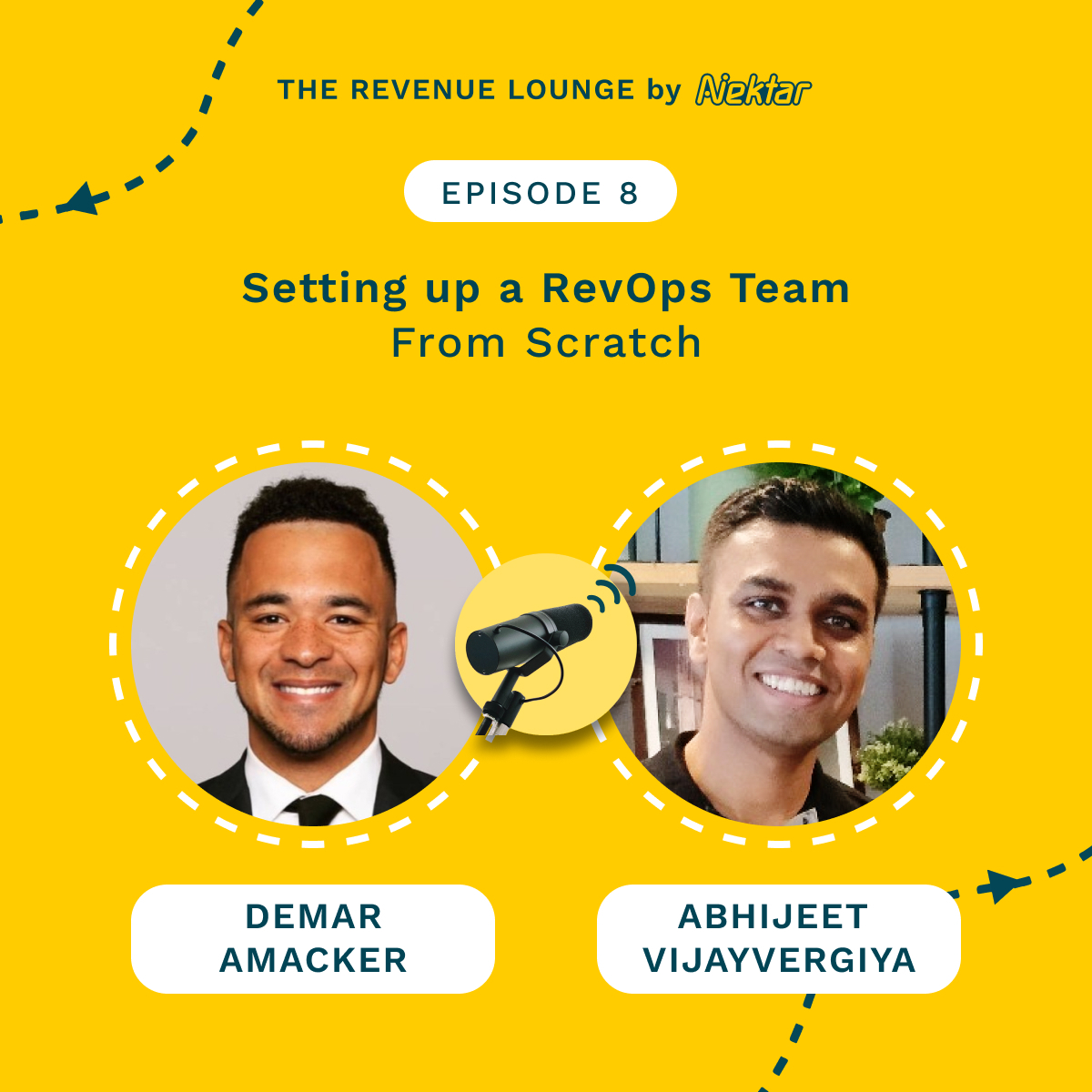
Ep #8: Setting Up a RevOps Team From Scratch
Listen Now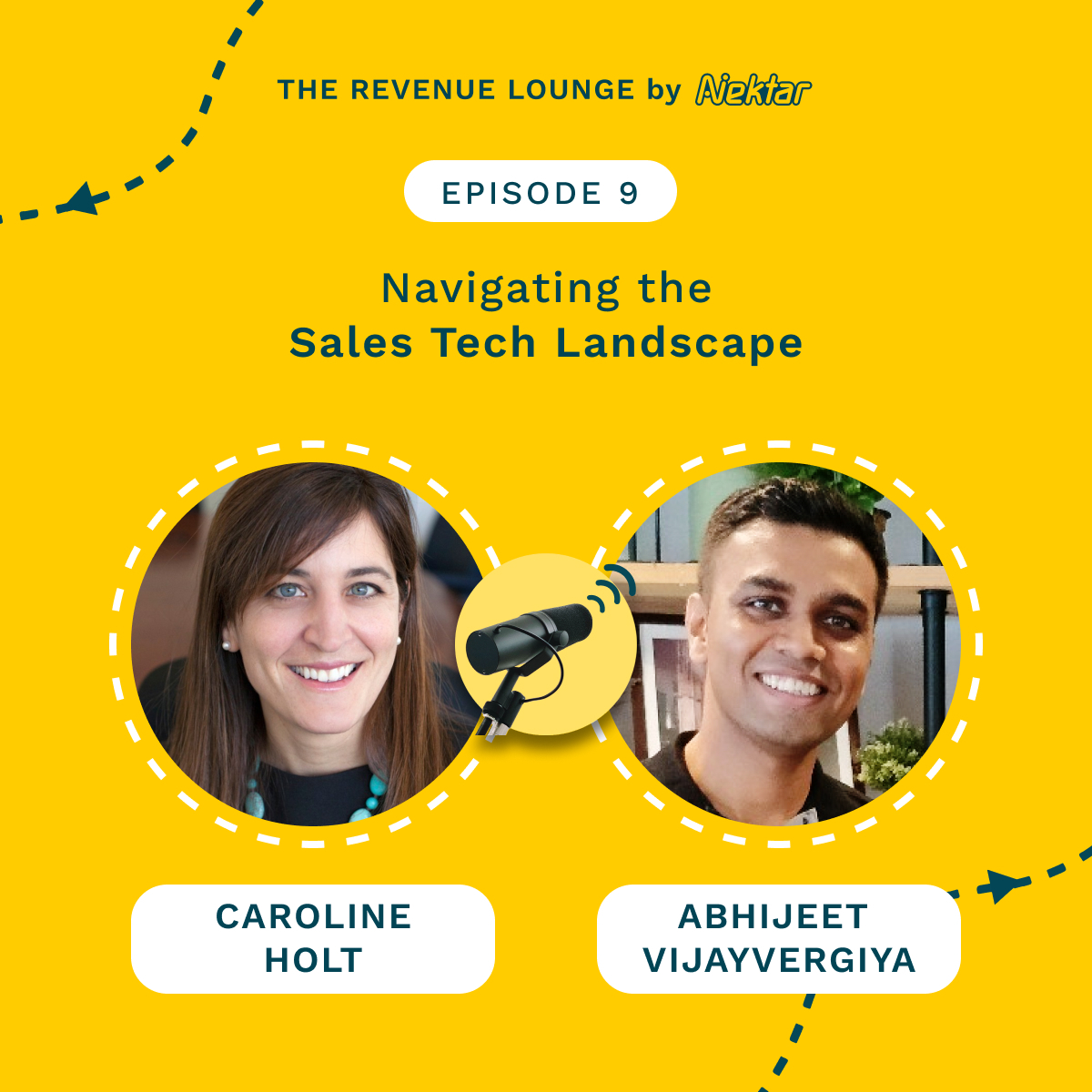
Ep #9: Navigating the Sales Tech Landscape
Listen Now